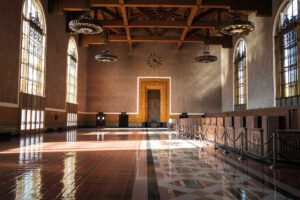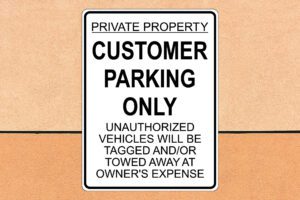
How to easily find Overnight Parking?
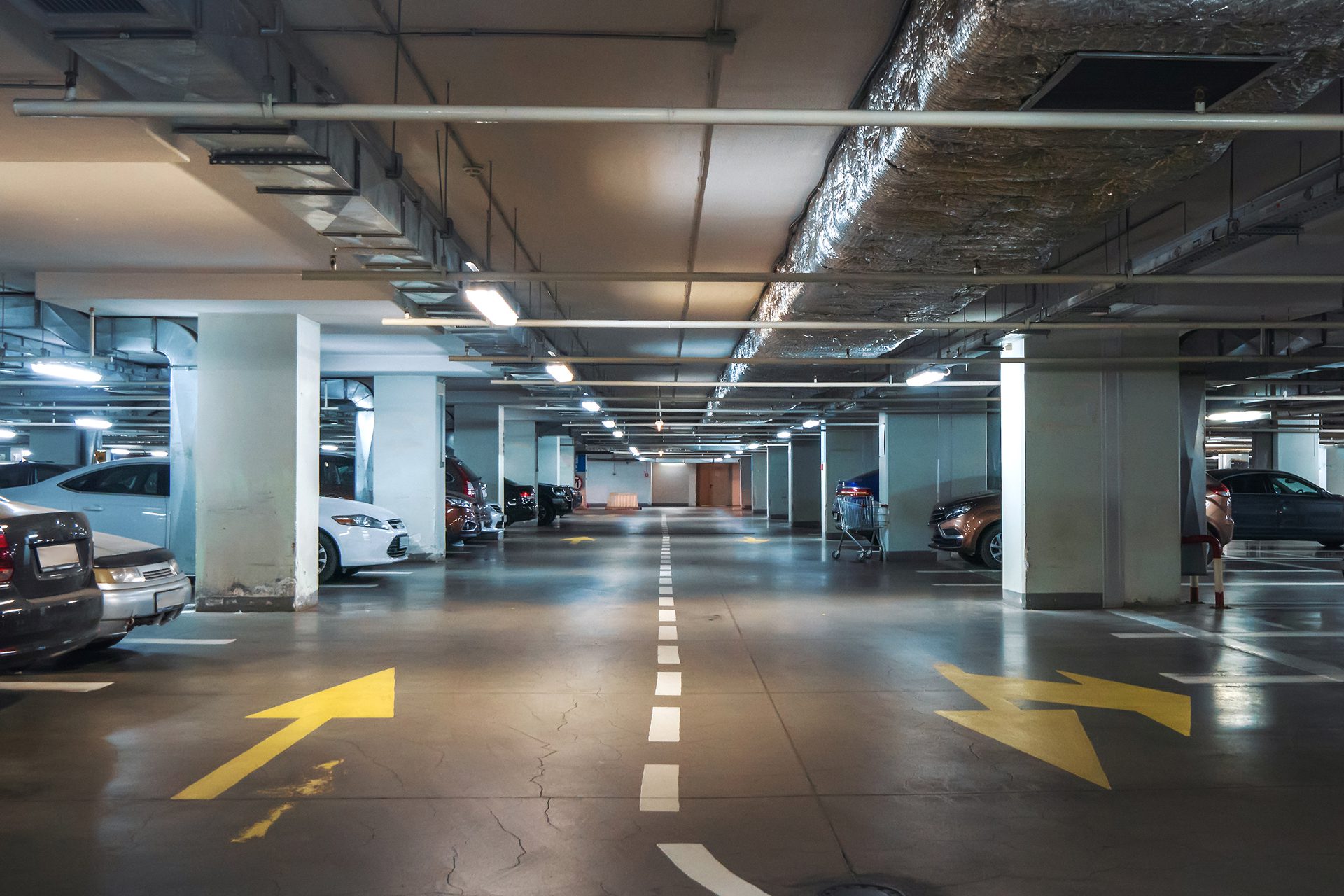
Table of Contents
Need a spot to park your car overnight without the hassle? You’re not alone. Our article cuts straight to the chase with practical advice on finding legal, secure overnight parking. From city-specific regulations to the safety essentials, we’ve got you covered.
Key Takeaways
-
Specialized apps and websites such as Curbstand, Spothero, and iOverlander provide comprehensive resources to find secure overnight parking spots, complete with user reviews, security features, and support for iframe integration.
-
Understanding and adhering to Los Angeles’ color-coded curb system and street parking regulations, such as the timing restrictions for yellow, green, and white curbs, is crucial to avoid fines and vehicle towing.
-
Overnight parking at 24-hour businesses like hotels and gyms can be secure and convenient, but always requires checking in with the business manager for permission, as well as being aware of any associated costs or valet parking rates.
USING Apps and Websites for Overnight Parking

With technology at our fingertips, specialized apps and websites have transformed into an indispensable resource for finding secure overnight parking spots. Some recommended platforms include:
-
Curbstand
-
Spothero
-
Parkwhiz
-
freecampsites.net
-
iOverlander.com
These platforms offer a plethora of overnight parking options, complete with user reviews and photos, and also support iframes for seamless integration on your website.
These digital tools not only help you find a place to park but also significantly increase safety and peace of mind. These platforms enable you to scout for overnight parking locations equipped with security cameras and sufficient street lighting. Plus, they also allow for a more secure overnight experience due to user-shared information on security features.
So, next time you need to park overnight, remember, there’s probably an app for that!
Top-rated Overnight Parking Apps
Next, we’ll delve into the features offered by these top-rated apps. Here are some of the features offered by each app:
-
Spothero and Parkwhiz: compare and book overnight parking options
-
iOverlander: provides listings and information on amenities such as tank dumping stations, popular among van lifers
-
Freecampsites.net: comprehensive database of free camping spots, great for budget-conscious travelers
-
US Public Lands app: handy tool for locating BLM Land boundaries, a popular option for legally permissible camping
-
Campendium and Curbstand: two more worthwhile additions to your digital toolbox, each offering unique features
These apps make the task of finding the perfect overnight spot that much easier.
Benefits of Using Apps and Websites
Apart from location finding, these apps and websites also provide valuable information that can significantly enhance your overnight parking experience. For instance, BLM land offers dispersed camping for free up to 14 days within a 28-day period, a cost-effective overnight parking option. Some developed campgrounds on BLM land even charge a small fee but offer valuable amenities like restrooms and electrical hookups.
Also, before you pull into a casino’s parking lot, you can use these platforms to learn about its specific overnight parking policies and any requirements such as checking in with security. In essence, these digital tools are not just maps; they’re comprehensive guides to your overnight parking journey.
Navigating Los Angeles Street Parking Regulations
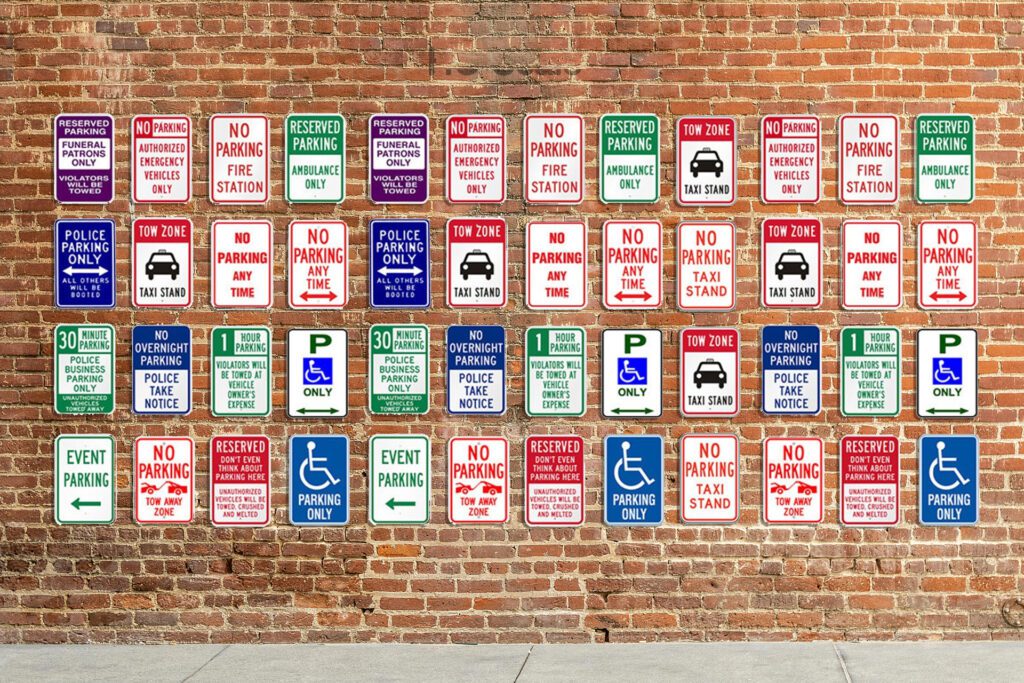
Parking on the streets of Los Angeles can often feel akin to navigating a maze. But one key to unlocking this puzzle lies in understanding the city’s color-coded curb system. In L.A., curb colors indicate parking regulations:
-
Red: No parking at any time
-
Green: Time-limited parking
-
Yellow: Daytime loading zones that may allow parking overnight
-
White: Immediate passenger loading and unloading only
But here’s the catch: Vehicles parked in violation of these regulations, including at color-coded curbs, can be ticketed and towed with little notice. Hence, understanding these color codes is crucial to dodge fines and ensure your vehicle is unmoved when you wake up!
Yellow Curbs
Yellow curbs in Los Angeles are designated for loading and unloading of passengers or freight. But here’s a silver lining for those in search of overnight parking: these curbs are usually enforced from Monday to Saturday, from 7am to 6pm, in most L.A. County cities. So, outside of these hours, you’re generally good to park overnight by a yellow curb. Just remember to always check for specific regulations posted nearby.
Green Curbs
On the other hand, green curbs are designated for short-term parking. They typically have posted time limits and are enforced from Monday to Saturday, from 8am to 6pm, in most L.A. County cities.
So, if you’re planning a short overnight stay, a green curb might just be your spot. But don’t forget, always keep an eye on the clock and the posted time limits to avoid a ticket.
White Curbs
Finally, there are three types of curbs that you should be aware of when parking:
-
Yellow curbs are for loading and unloading passengers or freight. You can stop here for a short period of time, but you cannot leave your vehicle unattended.
-
Green curbs are for short-term parking. You can park here for a limited amount of time, usually indicated by a sign or meter.
-
White curbs are designated for immediate loading and unloading of passengers only. They are usually enforced 24/7 and are not suitable for overnight parking.
So unless you’re planning to wake up every few minutes to mimic loading and unloading passengers, it’s best to steer clear of white curbs for your overnight stay.
Overnight Parking in 24-Hour Businesses
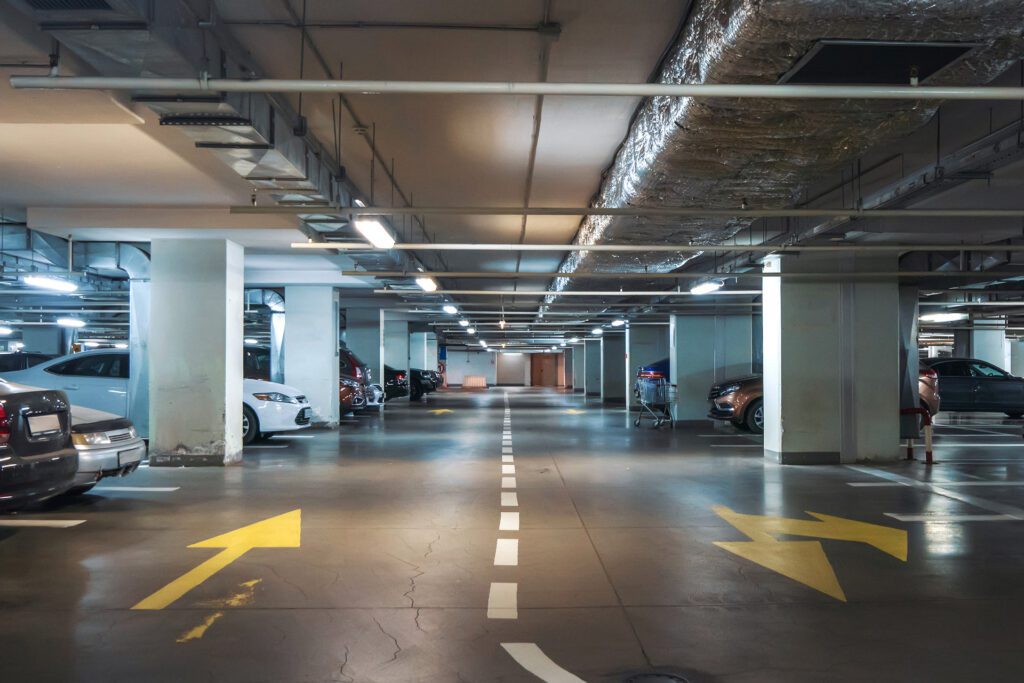
Who said parking lots are just for shopping? Believe it or not, parking at 24-hour businesses such as hotels and even gyms can offer a safe and convenient option for overnight stays. These businesses often have well-lit parking lots, surveillance cameras, and sometimes even security personnel, making them a secure choice for overnight parking. Besides, you might even get a chance to grab a late-night snack or an early morning workout!
However, don’t assume that every 24-hour business permits parking without prior parking permission. It’s always a good idea to check in with the business manager and get permission to park overnight. Also, be mindful of the parking rates if you’re considering valet parking. The last thing you want is to wake up to a hefty parking bill!
Choosing the Right Business
When selecting a 24-hour business for overnight parking, consider those with easy access to your daily needs, like food services, as well as ample parking space to avoid conflicts over parking availability. It’s also advisable to get permission from the business manager for overnight parking, particularly if you’re not patronizing the business, to foster positive relations and prevent any issues.
And remember, stealth is key. For spots that are not officially designated for overnight stays, like some hotels and hospitals, arriving late and leaving early can help you park without drawing attention.
Safety Tips
Safety should always be your top priority when parking overnight, and this is no different in business lots. Here are some tips to keep in mind:
-
Aim to park under lights whenever possible
-
Use main walkways rather than walking between parked cars
-
When returning to your vehicle, check the backseat before entering
-
Lock the doors immediately after getting in
-
Avoid getting distracted by your phone
And if you’re parking in an urban area for the night, avoid dangerous areas, keep your blinds drawn, and stay aware of your surroundings on the city street. Remember, safety first!
Exploring Shared Lots for Overnight Parking

Shared parking lots can be another viable option for overnight stays, thanks to the often ample space available. Shared lots, such as those at hotels and apartment complexes, often provide safe and convenient overnight parking. However, this doesn’t mean you can park without restriction. Always ensure that you’re allowed to park there overnight to avoid any potential conflicts with neighbors or other individuals who use the same lot.
However, shared parking lots do carry certain risks. The mixing of cars and pedestrians can increase the chance of collisions or issues related to distracted driving. So, while these lots may offer ample space for overnight parking, it’s crucial to be mindful of your surroundings and follow all parking and traffic rules.
Identifying Suitable Shared Lots
Identifying suitable shared lots for night parking is an important step. Consider local ordinances and the potential for neighborhood disputes. Some shared lots that might be suitable for overnight parking include hotel parking lots and apartment complexes, which are often well-lit and located close to your primary destination. However, be sure to avoid parking in shared lots without patronizing the respective business to avoid the risk of your vehicle being towed.
Staying Safe in Shared Lots
When it comes to staying safe in shared lots, vigilance is key. Here are some tips to help you stay safe:
-
Always stay aware of your surroundings, especially in lots located in areas with higher crime rates or during disturbances.
-
Lock your car doors and keep valuables out of sight.
-
Report any suspicious activity to law enforcement immediately.
Selecting shared parking lots with unremarkable appearances and dark-tinted windows can also reduce the chances of being targeted while sleeping in your vehicle. After all, a safe night’s sleep is a good night’s sleep!
Overnight Parking Among Fellow Van Lifers and RVs
If you’re a van owner or RV enthusiast, parking among your peers can be a great way to enhance your personal security and foster a sense of belonging within a mobile community. After all, there’s comfort in numbers, and van lifers and RV owners parked together often exchange stories, experiences, and valuable tips for living on the road. Plus, popular overnight parking destinations such as casinos can provide additional amenities and safety.
But how do you find these mobile communities? And once you’ve found them, how do you approach overnight parking? That’s what we’ll explore next.
Finding Van Life Communities
Finding van life communities for overnight stays can often be as simple as:
-
Following word of mouth
-
Joining social media groups
-
Participating in community forums dedicated to van life culture
-
Looking for areas where other RVs or vans are gathered, as these can often be welcoming spaces for fellow travelers.
BLM land is also a common gathering place for van life communities, offering opportunities for longer stays and networking with fellow travelers in a natural setting. So, don’t be a lone wolf; join the pack and enjoy the enhanced safety and camaraderie of van life communities!
Casino Parking Lots
If you’re looking for a safe and amenity-rich option for overnight parking, look no further than casino parking lots. Casinos often permit overnight parking for RVs and vans, providing a welcomed alternative to other parking options. These lots usually feature designated RV parking areas with commendable security, including regular patrols, and are often well-lit, enhancing safety for those staying overnight.
Plus, the social environment in casino parking lots can provide opportunities to socialize with other travelers, and the potential for additional perks such as player cards, meal vouchers, or free play credit. It’s a win-win situation!
Overnight Parking Regulations in Different Cities
Just like the cities themselves, overnight parking regulations can vary greatly from one city to another. Here are a few examples:
-
In Los Angeles, overnight parking is generally allowed unless there’s a posted sign indicating otherwise.
-
In Beverly Hills, street parking is banned from 2:30am to 5am.
-
In New York City, overnight parking is allowed on most streets, but you may need to move your car for street cleaning.
-
In San Francisco, overnight parking is allowed for up to 72 hours in most areas, but there are some restrictions in certain neighborhoods.
Understanding the specific overnight parking regulations of your destination city is essential to prevent any unwelcome fines or penalties.
These varying regulations highlight the importance of understanding local parking laws and regulations. A parking spot that’s perfectly legal in one city might get you a ticket in another, so always make sure to do your homework when parking overnight in a new city.
Los Angeles
In Los Angeles, overnight parking on the streets is generally allowed provided that no signs explicitly forbid it. But remember, in residential zones, overnight parking is prohibited from 2:00 am to 6:00 am, unless night parking permission is granted through street signs or permits.
Thus, when parking overnight on L.A. streets, always stay alert for parking signs and adhere to their restrictions.
Beverly Hills
On the other hand, in Beverly Hills, you’ll need to think twice before parking overnight on the street. That’s because street parking is banned from 2:30am to 5am without proper permits. And this prohibition is enforced without exceptions, so it’s best to secure a permit or find an alternative parking option if you’re planning to stay overnight in Beverly Hills.
Essential Traffic Laws to Know in L.A.
Of course, parking isn’t the only thing you need to be aware of on the roads of Los Angeles. Knowing essential traffic laws is as vital as understanding parking rules for a safe, hassle-free city stay. From unique rules like making a left turn on red from a one-way street to another one-way street, to ignoring red light camera tickets, knowing these laws can save you a lot of trouble on L.A.’s busy roads.
But remember, these traffic laws aren’t just about avoiding fines or tickets. They’re designed to ensure everyone’s safety on the road. So, whether you’re driving or parking, always remember to follow these laws and regulations.
After all, a safe journey is a happy journey, granted!
Left Turns on Red
In Los Angeles, there’s a specific situation where making a left turn against a red light is legally permitted. This exception applies when a driver is turning from a one-way street onto another one-way street, as long as there’s no sign explicitly prohibiting such a turn on red.
Hence, keep this rule in mind the next time you’re at a red light on a one-way street in L.A., and you might just save some time.
Red Light Camera Tickets
While we’re on the topic of red lights, let’s talk about red light camera tickets. In California, these cameras are legal and authorized under Vehicle Code 21455.5, which allows traffic enforcement systems at specific locations. Intersections equipped with red light cameras must feature visible signs within 200 feet to alert drivers of the camera’s presence. If you’re caught running a red light, you can expect a ticket mailed to the car owner, which includes a picture of the driver’s face for identification.
And while the temptation might be there to ignore these tickets, remember, ignoring a red light camera ticket in California carries risks, such as changes in policy that could lead to DMV actions, including license suspension or even issues with your license plate number.
Additional Traffic Laws
Apart from red lights and left turns, there are plenty of other traffic laws to keep in mind while driving in Los Angeles. For example:
-
Pedestrians have the right of way at all intersections, with or without marked crosswalks.
-
A single solid yellow line indicates the center of the road where passing is not allowed if it’s on your side.
-
Double solid yellow lines mean no passing is allowed at all.
And don’t forget about the safety requirements: all passengers in a motor vehicle are required by California state law to wear seat belts, and children under 8 years old must ride in a car or booster seat in the rear. As a responsible person, always remember: driving under the influence of alcohol or drugs is illegal and offenders are subject to arrest. Stay safe out there!
Summary
As we’ve seen, finding secure overnight parking doesn’t have to be a daunting task. Whether it’s navigating the color-coded curbs of Los Angeles, using apps and websites to locate the perfect parking spot, or joining the community of fellow van lifers and RVs, there are plenty of strategies and tools at your disposal. The key is to understand the regulations, stay informed, and always prioritize safety. Remember, a good night’s sleep starts with a safe and secure parking spot. So the next time you’re in Los Angeles or any other city, rest easy knowing you’ve got the tools and information you need to park safely and securely overnight.
Frequently Asked Questions
What are the different colors of curbs used for in L.A. street parking?
The different colors of curbs in L.A. street parking signify specific parking regulations: red curbs indicate no parking, white curbs are for passenger loading, yellow curbs serve as loading zones by day and parking spots at night, and green curbs are designated for short-term parking.
When are yellow curbs enforced in L.A. County cities?
Yellow curbs in most L.A. County cities are typically enforced Monday through Saturday, from 7am to 6pm. Therefore, it’s important to be mindful of parking regulations during these times.
When are green curbs enforced in L.A. County cities?
Green curbs in L.A. County cities are typically enforced from Monday to Saturday, from 8am to 6pm.
What are the overnight parking regulations in different cities?
In general, overnight parking is allowed in Los Angeles unless there are specific signs indicating otherwise. However, in Beverly Hills, street parking is banned from 2:30am to 5am. It’s important to check for local regulations before parking overnight.
Can you make a left turn on a red light in L.A.?
Yes, you can make a left turn on a red light in Los Angeles when turning from a one-way street onto another one-way street, provided there’s no sign prohibiting the turn on red.
More from the Blog







What Does Off-Street Parking Mean for Drivers?



Tips for Securing Apartment Parking in Downtown LA
